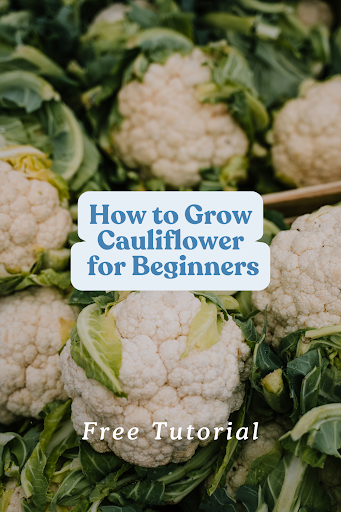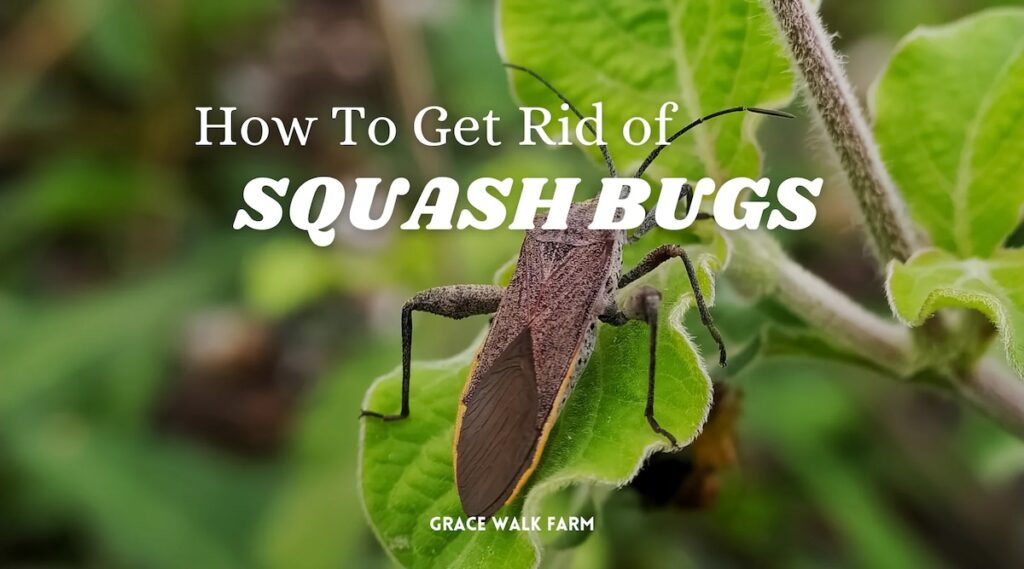Cauliflower might have a reputation for being a little tricky to grow, but once you understand what it needs, it’s actually one of the most rewarding vegetables to harvest. With its crisp texture and mild, nutty flavor, homegrown cauliflower is nothing like the bland, store-bought versions. But to get those big, beautiful heads, you’ll need to time your planting just right and give your plants a little extra care.
If you’ve ever had cauliflower that refused to form a head, turned bitter, or bolted too soon, don’t worry—you’re not alone! This guide will walk you through how to grow cauliflower from seed to harvest so you can enjoy perfect, homegrown heads all season long.
Welcome to Grace Walk Farm, our family homestead in western NC. We share the highs and lows of our homestead journey, in hopes that it will encourage you to grow your own food too. Click here to grab our Beginner Garden Guide for free! Join our 600K strong Instagram community of homesteaders here. Thanks for stopping by!
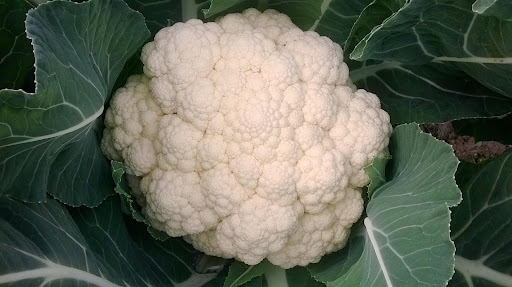
Choosing the Right Variety
Cauliflower comes in more than just the classic white form. There are different varieties suited for different climates and growing conditions. Here are a few beginner-friendly options:
- Snowball – A classic, reliable white variety that grows well in most gardens.
- Cheddar – A beautiful orange variety that’s high in beta-carotene.
- Graffiti – A vibrant purple cauliflower that adds color to any dish.
- Romanesco – Known for its striking spiral pattern and nutty flavor.
- Self-Blanching Varieties – Some types, like ‘Self-Blanching Snowball,’ naturally curl their leaves over the head to protect it from sunlight, reducing the need for manual blanching.
How to Plant Cauliflower
Cauliflower requires the right timing and growing conditions to thrive. Since it prefers cool weather, it’s best to plant in early spring for a summer harvest or late summer for a fall harvest.
Start with Healthy Soil
Cauliflower needs rich, well-draining soil with plenty of nutrients.
- Work in compost or aged manure before planting.
- Aim for a soil pH between 6.0 and 7.0 for optimal growth.
- Avoid compacted or heavy clay soil—loose, fertile soil encourages bigger heads.
Planting from Seeds or Seedlings
You can start cauliflower indoors or sow seeds directly in the garden.
- Starting Indoors – Begin seeds 4-6 weeks before your last frost date. Transplant outdoors when seedlings have 4-5 true leaves.
- Direct Sowing – Plant seeds ¼ to ½ inch deep, spacing them 18-24 inches apart in rows at least 2 feet apart.
- Transplanting – Harden off seedlings by gradually exposing them to outdoor conditions before planting in the garden.
Watering and Feeding
Cauliflower needs consistent moisture and nutrient-rich soil to develop large, healthy heads.
- Water deeply 1-2 times per week, keeping the soil evenly moist but not soggy.
- Apply a balanced fertilizer every few weeks to promote steady growth.
Caring for Cauliflower
Once your cauliflower plants are in the ground, a little extra care will ensure strong growth and beautiful heads.
Mulching for Moisture Retention
A layer of mulch helps retain soil moisture, regulate temperature, and suppress weeds.
- Use straw, shredded leaves, or grass clippings around the base of plants.
- Keep mulch a few inches away from the stems to prevent rot.
Blanching for White Cauliflower
If you’re growing traditional white cauliflower, you may need to protect the heads from sunlight.
- Once the heads reach 2-3 inches in diameter, loosely tie the outer leaves over them to shield them from direct sun.
- This prevents the heads from turning yellow or developing a bitter taste.
Fertilizing for Strong Growth
Cauliflower is a heavy feeder and benefits from extra nutrients throughout the season.
- Use a high-nitrogen fertilizer during the early growth stages.
- Once heads start forming, switch to a balanced fertilizer for even development.
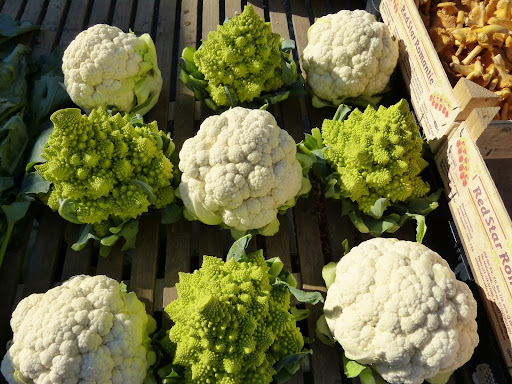
Managing Pests and Diseases
Like other brassicas, cauliflower can attract pests, but a little prevention goes a long way.
Common Pests:
- Cabbage Worms & Loopers – These green caterpillars chew through leaves and heads. Control them with row covers, handpicking, or organic sprays like Bt (Bacillus thuringiensis).
- Aphids – Small sap-sucking insects that weaken plants. Rinse them off with a strong spray of water or apply neem oil.
- Flea Beetles – Tiny beetles that leave small holes in leaves. Use floating row covers to protect young plants.
Common Diseases:
- Clubroot – A fungal disease that causes swollen, deformed roots. Prevent it by rotating crops and maintaining well-drained soil.
- Downy Mildew – Yellow patches on leaves caused by wet conditions. Improve air circulation and avoid overhead watering.
Best Companion Plants for Cauliflower
Certain plants help cauliflower grow better, while others should be avoided.
- Good Companions: Celery, onions, beets, spinach, and dill (which attracts beneficial insects).
- Bad Companions: Tomatoes, peppers, and strawberries (they compete for nutrients and space).
Troubleshooting Common Cauliflower Problems
Cauliflower can be finicky, but most issues can be prevented with the right care.
- No Heads Forming? This is often due to high temperatures or poor soil nutrition. Keep soil rich in organic matter and plant at the right time of year.
- Heads Are Small? This can happen when plants are too crowded or aren’t getting enough nutrients. Make sure to space plants properly and fertilize regularly.
- Bitter Taste? Caused by heat stress or inconsistent watering. Keep soil evenly moist and mulch to regulate temperature.
- Bolting (Flowering Too Soon)? Usually caused by a sudden heatwave. Plant in cool seasons and use row covers for temperature control.
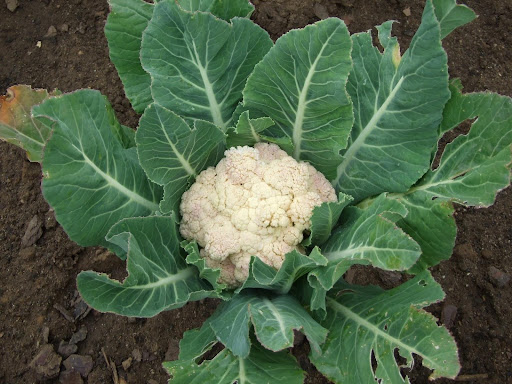
Harvesting and Storing Cauliflower
Cauliflower is ready to harvest when heads are firm, compact, and about 6-8 inches in diameter.
- Use a sharp knife to cut the head at the base, leaving some outer leaves attached for protection.
- If harvesting in warm weather, do it early in the morning for the best quality.
- Store fresh cauliflower in the fridge for up to two weeks, or blanch and freeze it for longer storage.
Now that you know how to grow cauliflower, you’re ready to enjoy one of the most rewarding vegetables in your garden! With a little patience and the right growing conditions, you’ll be harvesting crisp, delicious cauliflower in no time. Whether you roast it, mash it, or enjoy it raw, nothing beats the taste of homegrown cauliflower!
Also check out these blogs:
- Why I Make Bone Broth for Flu
- Winter Wellness Tea: A Cozy Cup of Immune Support
- Hidden Benefits of Snow and Winter Weather for Your Garden
- Winter Gardening: Hacks to Keep Your Green Thumb Warm and Your Organic Garden Thriving
- How to Make Tinctures: Preserved Medicinal Herbs in Liquid Form
- How to Make a Lemon Balm Tincture

